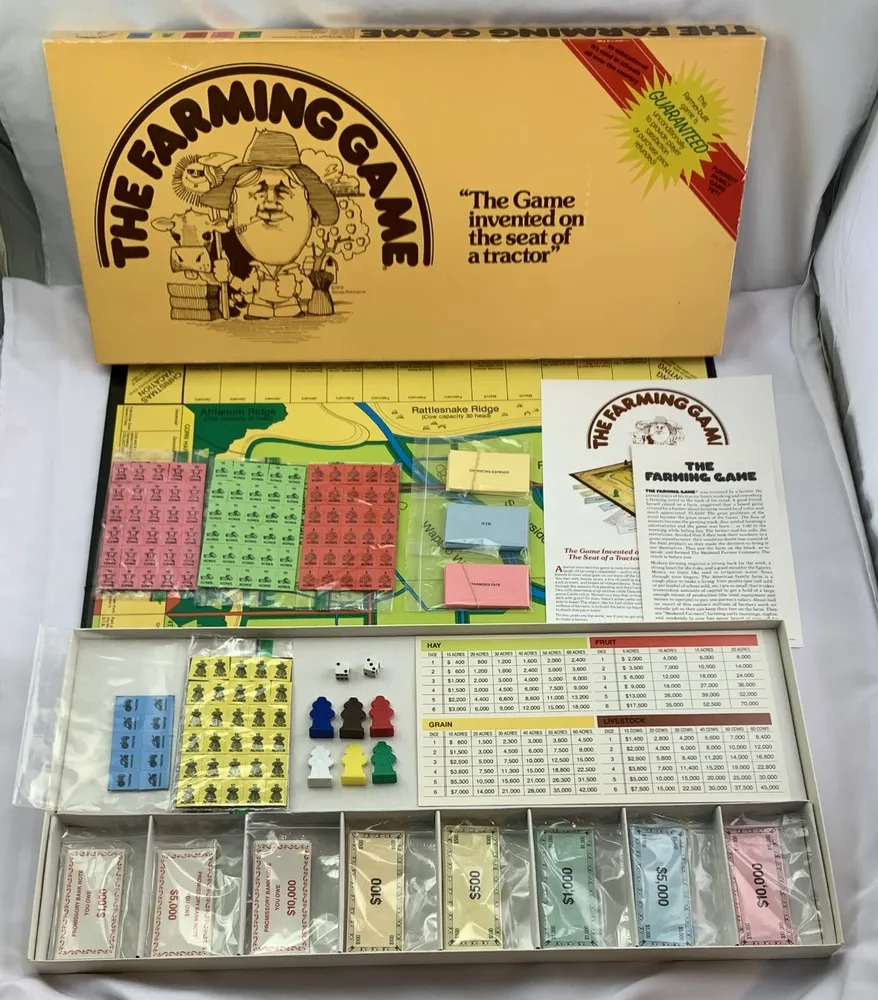The Farming Game (1979)
The Farming Game
“The Farming Game” is a board game that simulates the economics of a small farm, published in 1979 by George Rohrbacher, a rancher in Washington state. The game was created as a way to raise money to save the family farm, and it has since sold several hundred thousand copies. The game has been adapted for Mac and Linux, and is available for download on PC, Mac, and Linux as late as 2018.
Why is The Farming Game Popular?
The Farming Game is popular and significant because it:
– Reflects the real-life difficulties of running a farm, with names and places in the game based on real families that have farmed for generations in the Yakima Valley and other parts of Central Washington.
– Provides an educational and entertaining experience for players, allowing them to learn about the challenges faced by farmers while having fun.
– Has been used in schools worldwide, helping students understand the complexities of agriculture and farm management.
Game Components of The Farming Game
How To Setup The Farming Game
To set up The Farming Game, start by placing the game board in the middle of the playing area. Each player chooses a token and places it on the starting space. Shuffle the crop and livestock cards, and deal a set amount to each player. Distribute the initial money and resource tokens according to the rulebook. Finally, shuffle the weather cards and place them within reach of all players.
Gameplay Mechanics and Game Objective
Player Experience
Playing The Farming Game offers a blend of strategic planning and luck, as players navigate the challenges of farming. The game requires careful resource management and adaptability to unexpected weather events. Players must balance short-term needs with long-term goals, making it engaging and intellectually stimulating.
Pros
Cons
Personal Thoughts on The Farming Game
The Farming Game is ideal for those who enjoy simulation games and are interested in agricultural themes. It is particularly suited for families or groups looking for a game that combines strategy with a touch of realism. While it may not be the best fit for very young children due to its complexity, it offers a rewarding experience for players who enjoy managing resources and overcoming challenges.
We are supported by our audience. When you purchase through links on our site, we may earn an affiliate commission, at no extra cost for you. Learn more.

